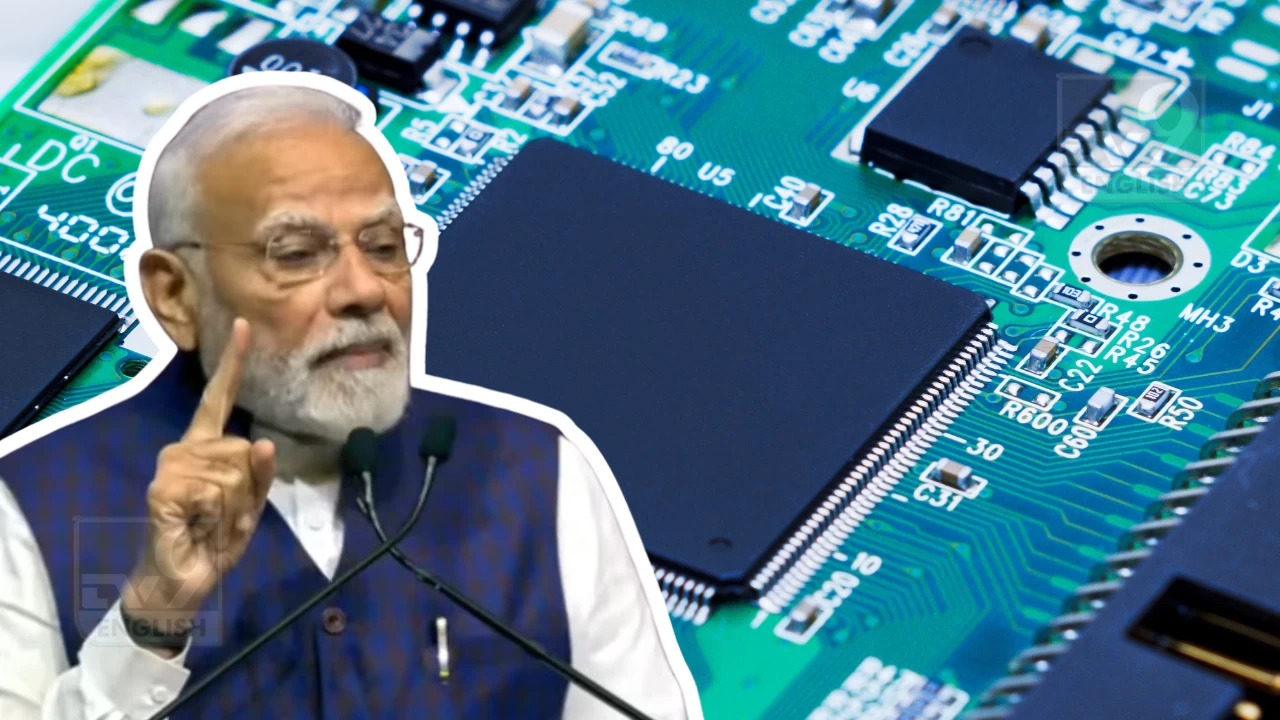

By signing in or creating an account, you agree with Associated Broadcasting Company's Terms & Conditions and Privacy Policy.


By signing in or creating an account, you agree with Associated Broadcasting Company's Terms & Conditions and Privacy Policy.

New Delhi: Prime Minister Narendra Modi inaugurated the Semicon India 2025 summit in New Delhi on Tuesday, September 2, where he was presented with the country’s first fully indigenous semiconductor chip. Union IT Minister Ashwini Vaishnaw handed over the Vikram 32-bit processor, developed by ISRO’s Semiconductor Lab, to the Prime Minister during the ceremony.
The three-day event is being seen as a turning point in India’s semiconductor journey. Modi described chips as the new “digital diamonds,” underlining their growing importance in powering the global economy. He also reminded the audience that India’s economy grew at 7.8% in the first quarter of FY26, outpacing expectations despite global uncertainty.
In his keynote, Modi said that just as oil was “black gold” in the previous century, semiconductors are the “digital diamonds” of the 21st century. “Oil shaped the last century, and the fate of the world was tied to oil wells. But in the 21st century, power is concentrated in the small chip,” he said.
The Prime Minister added that the global semiconductor industry, worth around $600 billion today, is on course to cross $1 trillion in the coming years. He said India aims to play a defining role in this growth story and pointed out that the country’s semiconductor programme, launched in 2021, has already attracted investments worth $18 billion across 10 projects.
Modi also announced that the government is working on the next phase of the India Semiconductor Mission along with a fresh Design-Linked Incentive (DLI) scheme. He stressed the importance of securing raw materials, saying, “Critical mineral mission is key focus area. We are looking to meet rare earth demand through domestic production.”
He called for semiconductor intellectual property to be developed in India itself, which would make the country more competitive with global peers.
Vaishnaw, while presenting the Vikram processor to the Prime Minister, said the milestone reflects how far India has come since 2021. He noted that five semiconductor units are already under construction and highlighted that nearly ₹65,000 crore has been committed under the ₹76,000 crore Production Linked Incentive (PLI) scheme.
The Vikram processor, according to ANI, has been designed to withstand harsh launch vehicle conditions, making it suitable for space and defense applications. Alongside, test chips from four approved projects were also showcased.
International tech leaders praised India’s progress. Tim Archer, CEO of Lam Research, said India is laying the foundation for a “resilient semiconductor ecosystem” as the global market moves closer to the trillion-dollar mark. Kai Beckmann of Merck predicted India’s domestic semiconductor market could hit $100 billion (₹8.7 lakh crore) by 2030.
AMD CTO Mark Papermaster highlighted the company’s $400 million (₹3,480 crore) India investment and praised the country’s “extraordinary talent base.” Beckmann compared semiconductor growth to a “team sport,” calling for greater collaboration between industry players and governments.
PM Modi summed up the country’s vision by saying, “Day is not far when world will say: Designed in India, Made in India, and Trusted by World.” He added that even the smallest chip built in India has the potential to drive massive global change.
With investments flowing, new fabrication plants under development, and global partnerships expanding, India is positioning itself not just as a participant but as a leader in the global semiconductor race.








